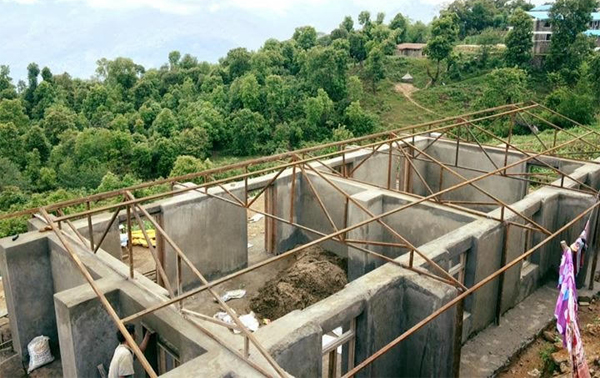
“Namaste everyone,
The Earthbag school in Bhackek is finished! It took 250 local workers, and 65 volunteers 4 1/2 months to complete. We would like thank all the donors and volunteers who have contributed time and money to make this possible.
Nepal
Cowboy Builders in Nepal
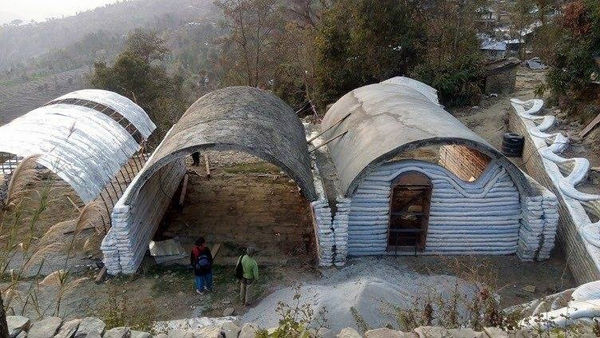
The importance of using trained engineers, architects and supervisors can’t be emphasized enough. Due to a lack of trained builders, a few dangerous earthbag projects have been built in Nepal by what I call ‘cowboy builders’ – those with little or no training or building experience. We heard of a school in Mazel in Ghorka that was described as “the worst earthbag building in Nepal”. It has bamboo pins eaten by insects instead of steel rebar, two large 8’x8’ windows set 3’ apart, and dry soil fill consisting of 100% silt which has no binding strength. Proper earthbags are made with moist subsoil containing clay and aggregates, and then tamped solid to create ‘rammed earth in bags’.
30 Earthquake Resistant Earthbag Houses in Mulabari, Nepal
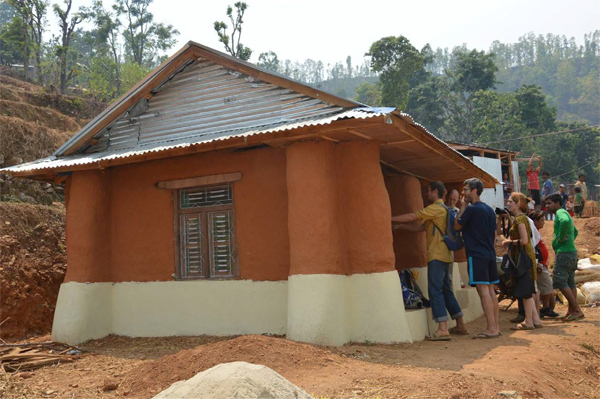
I’m back home now (yeah!), but wanted to share more of what we saw while touring earthbag projects near Kathmandu. Carisimo, a German-based NGO, have built 30 earthbag houses in this village using young foreign volunteers and local families. This is the largest earthbag housing project in Nepal that we know of.
The Owner Builder Magazine: Rebuilding Nepal
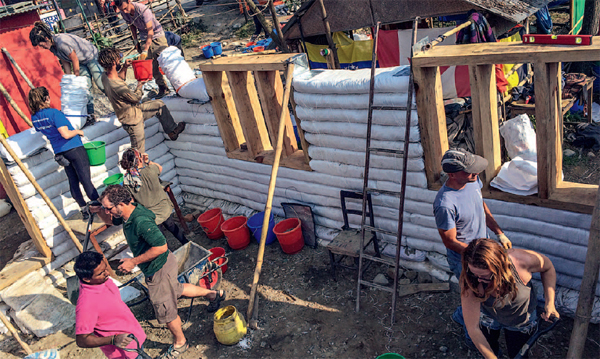
Lynda at The Owner Builder Magazine kindly sent us this excellent article written by Mark Clayton. Full text is available through their magazine or by downloading it from Earthbag Building.com.
Reconstructing Steel Framed Schools in Nepal with Earthbags
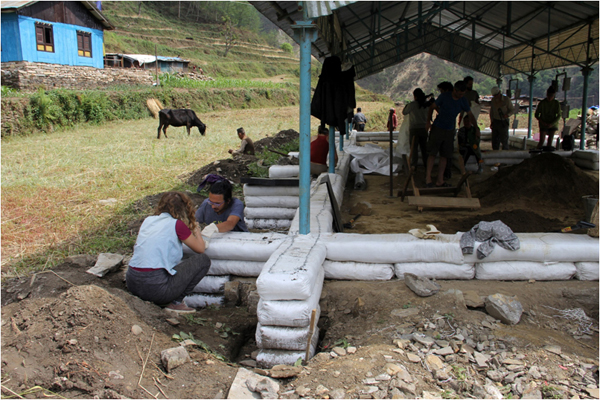
Phulping, Sindhupalchok: This first of its kind school reconstruction project reuses existing steel posts, steel trusses, metal roofing, foundation, concrete slab floor, windows and doors, and integrates them with earthbag tube walls. The design is very strong because the steel frame braces the earthbag walls, and the earthbag walls and buttresses reinforce the steel posts.
Gabion Band Stone Construction
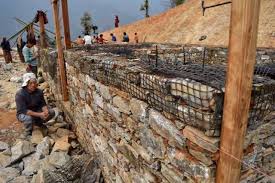
Special thanks to Randolph Langenbach who sent me this information on rebuilding rural stone houses in earthquake zones with gabion bands. The basic concept uses ring beams of stones wrapped in strong mesh to tie the masonry walls together.
